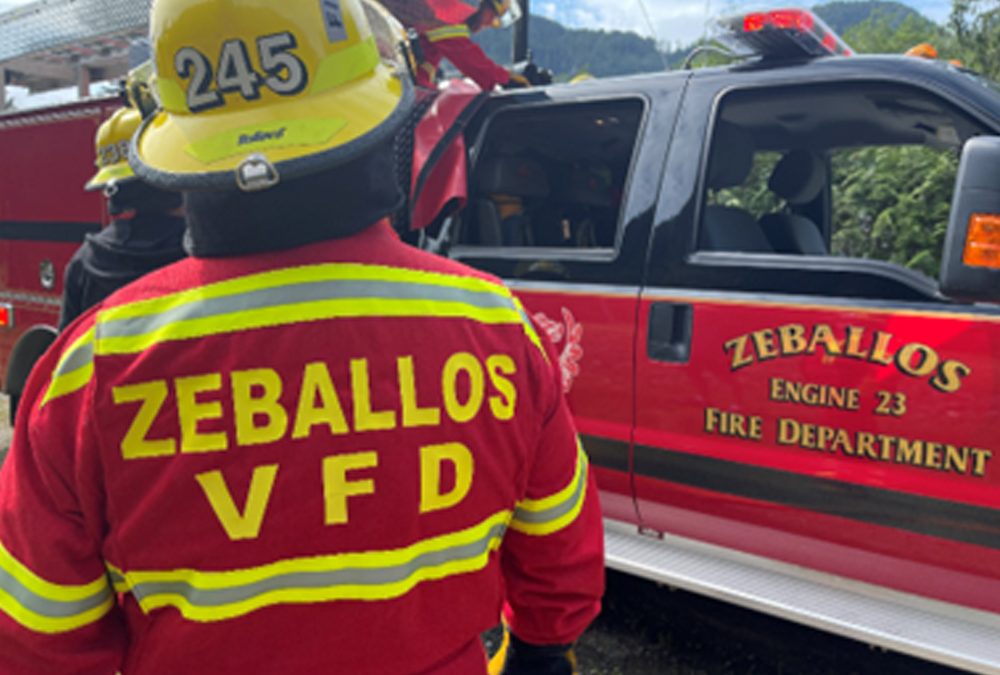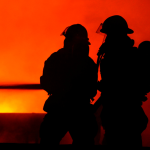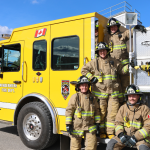Lieutenant Seann Wells recently returned from a two-day boot camp hosted by FireWise Consulting in the Village of Zeballos. A town where the Fire Department had temporarily closed its doors due to unsafely low member numbers.
We sat down to discuss why this may have happened, what changes we are seeing in the volunteer fire service industry to cause numbers to continue to fall to new lows, and what things can be done to mitigate some of the losses fire departments are dealing with.
Seann Wells has been a part of the fire service for the past 20 years, starting as a volunteer in 2002 and going career in 2011. In 2019, Seann Wells joined the FireWise team as an associate, assisting with training and fire investigations in municipalities across British Columbia.
Can we solve, or slow, the declining numbers in the volunteer fire service?
“Sometimes we get stuck in the mindset of looking for what we think is a firefighter. But a wide range of skills is needed in a fire department.”
Seann talks about the different realities that communities face in recruitment for both volunteer and career firefighters. We asked him what he saw as the reason for the rapid decline in volunteer firefighters. “I would be a millionaire if I knew that answer,” he replied.
According to an article written in Firefighting in Canada, we have lost one-fifth of the volunteer base in the last five years. Not only that, but the total number of volunteer fire departments has dropped from 3,500 in 2016 to just 3,200 in early 2021.
In a study written in Firefighter Nation in 2016, the numbers of volunteer firefighters recorded were at the lowest levels since the National Fire Protection Association (NFPA) began the survey in 1983. Unfortunately, those numbers have continued to decline.
In speaking with Seann, he stressed the importance of community-specific recruitment efforts. “I think fire departments need to be very practical in their recruitment. Everyone has in their mind what a firefighter should be. They understand the commitment to the training. But do fire departments need to attract just firefighters?” he said.
“It’s not just people that can do rescues, fire suppressions, and medical. They need help with administration, which is often why people burn out. Are there people with those skill sets that can help in those areas? Are there people who can do traffic control or medical but don’t want to do fire suppression and crawl on the ground and lift ladders? You must be open-minded when recruiting people and be broader with the people you attract.”
Take a step back, and look at the bigger picture.
Consider looking at the broader picture. A wide range of skills is needed to run a fire department effectively, and hiring the right people for those jobs is essential.
“It’s like a business, just like anything else. You need to hire the correct people for the job, and there are a lot of jobs in the fire service. So, bring people on board and don’t necessarily have them as a firefighter but still have them contribute to the fire department.” Seann says.
While the number of calls continues to rise, the number of firefighters available is dropping.
Unfortunately, the declining number of volunteer firefighters does not reflect the increased need for the fire service. “The fire department is that business where you call 911, and you expect them to do anything,” Seann noted.
According to the NFPA, in 2021 alone, there were approximately 36,624,000 fire department calls, which is almost four times what it was 40 years ago. However, the number of volunteer firefighters is dwindling at a much faster rate, which can put significant amounts of stress on these departments that are already close to their limits.
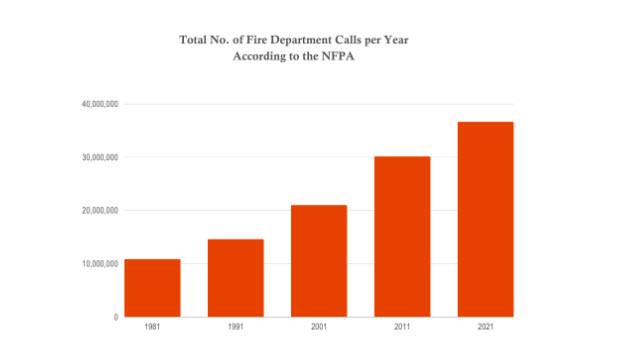
Data source: The National Fire Prevention Association (NFPA)
“It doesn’t matter if you’re in a town of 100 or 100,000; if someone calls 911 and expects the fire department, they want to see what they see on TV. Sometimes it’s a bit of a reality check.”
What happens if there aren’t enough people to safely run a department?
While uncommon, fire departments even closing their doors can happen in smaller communities that don’t have the hands to effectively keep up with demand. With the number of volunteers hitting an all-time low, the Village of Zeballos saw first-hand what this meant.
“In this case, [in Zeballos] the numbers dwindled so low that it wasn’t safe to have just one or two people tend a fire. Someone’s going to get hurt. And it becomes a liability for the community.” Seann said.
After the mayor announced the temporary suspension of the fire department, FireWise organized and conducted a two-day boot camp in Zeballos, which 14 members of the community attended to prepare to be a part of the department. Some had previous experience, but most had none whatsoever.
“What it was this quick introduction to the fire service. So, we did hose handling, hose streams, spraying water, how to move a hose that’s charged under pressure, and a few truck operations with them. Ladders, rescue equipment, communications, and a little bit about interface fires. It was a snapshot. It wasn’t to give anyone certificates or certification, it was – hey, if you want to join the fire service, this is what you need to expect.” Seann said in describing the boot camp.
“We saw a lot of smiles. A lot of people got sweaty, and that’s what we want. It means everyone participated. And we finished with a couple of scenarios, we did a couple of mock fires, and they had to respond to them and do their jobs. And they all performed well.”
With the boot camp complete and the numbers back up, Zeballos was recently given the green light to open their fire hall again.
“It was a great turnout. They need to harness the momentum now. That’s the trick. You have got to keep people engaged week after week, then you retain them. Because they are excited to come.” Said Seann.
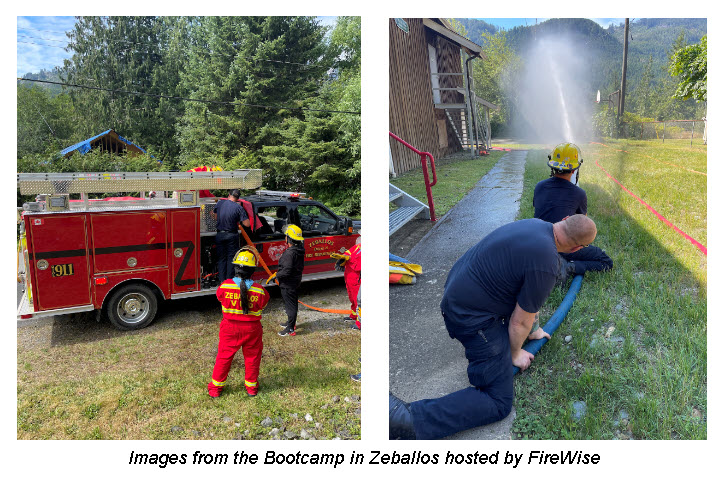
Keeping your community and your people engaged.
Keeping your departments engaged and the community involved is just one part of maintaining a sense of belonging in a fire department.
“To understand recruitment and retention, the fire department must understand why people are leaving. That is important.” Seann continued, “There is no one answer for any fire department. It’s community firefighting, and it’s community fire service. And each community can have some similarities, but each is also going to have a lot of differences You do need to take the time to understand what is drawing people to your fire department, why they want to be there, and why they are leaving.”
When people leave, find out why. Conduct those exit interviews. Dig deeper into why they are leaving. Ask them to get detailed. “Are there things that we could have changed? Were we able to achieve your goals? If we could not achieve your goals, why do you think we were unable to? Let us get to the root of it.” Seann noted.
The cause of the volunteer firefighter shortage we are facing is the result of many different changes in the industry and our world. The dwindling numbers can have profound impacts for communities like Zeballos that rely almost entirely on volunteer departments.
There is no ‘one-size-fits-all’ solution to the problem. Each community and department need to look at their individual needs and find new ways to reach recruits. Creating a sense of belonging, understanding your members’ needs, and understanding the needs of their families is just the starting point.

